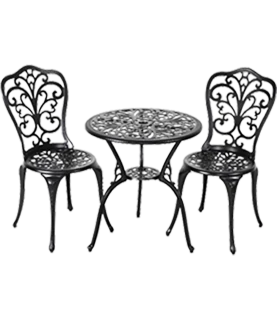cast iron decorative finial
The Timeless Elegance of Cast Iron Decorative Finials
When it comes to enhancing architectural beauty and adding a touch of sophistication to various structures, few elements rival the allure of cast iron decorative finials. These exquisite adornments not only serve a functional purpose but also act as a statement of artistry and craftsmanship. Originating from centuries past, cast iron finials have been utilized on everything from rooftops and gates to fences and balconies, representing a rich tradition of design that continues to inspire modern aesthetics.
Understanding Cast Iron Finials
Finials are decorative elements typically placed at the top of structures, serving as a crowning touch that completes the overall design. Cast iron, a material that has stood the test of time, is known for its durability and malleability, making it an ideal choice for creating intricate and detailed designs. Cast iron can be molded into various shapes and patterns, allowing artisans to craft unique finials that reflect the architectural style and personality of a building.
The process of casting iron involves melting the metal and pouring it into molds, where it cools and hardens into a solid form. This method provides an opportunity for intricate designs, enabling the creation of ornate motifs that can capture the essence of different historical periods—from Gothic revival to Victorian elegance.
Architectural Significance
One of the most appealing aspects of cast iron decorative finials is their ability to enhance the architectural integrity of a building. Finials can be found on residential homes, public buildings, and historical landmarks, often becoming focal points that draw the eye. Whether it’s a delicate fleur-de-lis, an ornate globe, or a simple spire, the right finial can elevate the appearance of a structure, adding height and dimension.
In Victorian-era architecture, for example, finials were often employed to showcase wealth and sophistication. Homeowners would select elaborate designs that reflected the status of their family, making finials an integral part of their exterior decor. Today, many restored buildings retain their original finials, allowing admirers to glimpse the craftsmanship of the past while enriching the character of contemporary neighborhoods.
Versatile Applications
cast iron decorative finial

While traditionally associated with architectural structures, cast iron decorative finials have found applications in various contexts. Garden enthusiasts often incorporate finials into their landscaping designs, using them to adorn fences, gates, or trellises. They can serve as unique garden stakes or finishing touches atop raised planter boxes, adding a touch of elegance to outdoor spaces.
In commercial settings, cast iron finials can be seen adorning public parks, historical sites, and municipal buildings, creating a sense of continuity between past and present. Their robust nature ensures they withstand the elements, while their artistic designs provide visual interest.
Modern Trends and Customization
Today, there is a resurgence of interest in cast iron decorative finials, particularly as architects and designers look to incorporate traditional elements into contemporary projects. With advances in casting technology, customization options have expanded significantly. Clients can now work with artisans to create unique finials that suit their specific visions, whether they desire a historic replica or a bespoke design.
This blend of tradition and modern creativity means that cast iron finials can complement a broad spectrum of architectural styles. From minimalist designs that celebrate sleek lines to ornate vintage-inspired pieces, there is a finial to suit every taste and preference.
Preserving Heritage
As we move further into the 21st century, the preservation of historical architecture becomes increasingly important. Cast iron decorative finials serve as symbols of craftsmanship and durability while reminding us of the artistry of our architectural heritage. Restoring or incorporating these finials in new constructions not only beautifies buildings but also pays homage to the skilled artisans who created these timeless pieces.
In conclusion, cast iron decorative finials are much more than mere embellishments; they are expressions of history, art, and architectural integrity. As styles evolve and trends change, the charm and elegance of cast iron finials remain steadfast, proving that good design truly transcends time. Whether adorning a grand estate or enhancing the local park, these exquisite pieces continue to capture the imagination and inspire a sense of place, identity, and beauty.
-
Wrought Iron Components: Timeless Elegance and Structural StrengthNewsJul.28,2025
-
Window Hardware Essentials: Rollers, Handles, and Locking SolutionsNewsJul.28,2025
-
Small Agricultural Processing Machines: Corn Threshers, Cassava Chippers, Grain Peelers & Chaff CuttersNewsJul.28,2025
-
Sliding Rollers: Smooth, Silent, and Built to LastNewsJul.28,2025
-
Cast Iron Stoves: Timeless Heating with Modern EfficiencyNewsJul.28,2025
-
Cast Iron Pipe and Fitting: Durable, Fire-Resistant Solutions for Plumbing and DrainageNewsJul.28,2025
-
 Wrought Iron Components: Timeless Elegance and Structural StrengthJul-28-2025Wrought Iron Components: Timeless Elegance and Structural Strength
Wrought Iron Components: Timeless Elegance and Structural StrengthJul-28-2025Wrought Iron Components: Timeless Elegance and Structural Strength -
 Window Hardware Essentials: Rollers, Handles, and Locking SolutionsJul-28-2025Window Hardware Essentials: Rollers, Handles, and Locking Solutions
Window Hardware Essentials: Rollers, Handles, and Locking SolutionsJul-28-2025Window Hardware Essentials: Rollers, Handles, and Locking Solutions -
 Small Agricultural Processing Machines: Corn Threshers, Cassava Chippers, Grain Peelers & Chaff CuttersJul-28-2025Small Agricultural Processing Machines: Corn Threshers, Cassava Chippers, Grain Peelers & Chaff Cutters
Small Agricultural Processing Machines: Corn Threshers, Cassava Chippers, Grain Peelers & Chaff CuttersJul-28-2025Small Agricultural Processing Machines: Corn Threshers, Cassava Chippers, Grain Peelers & Chaff Cutters












